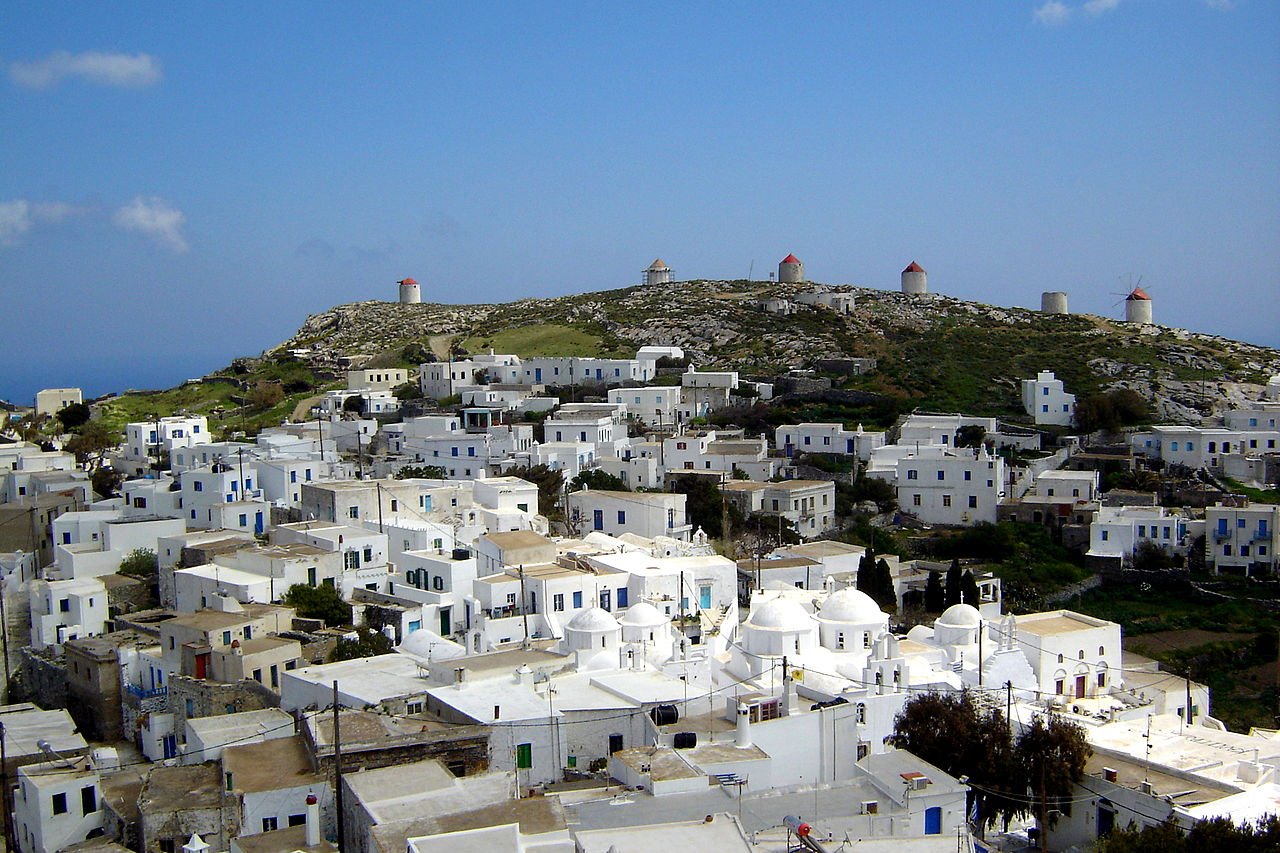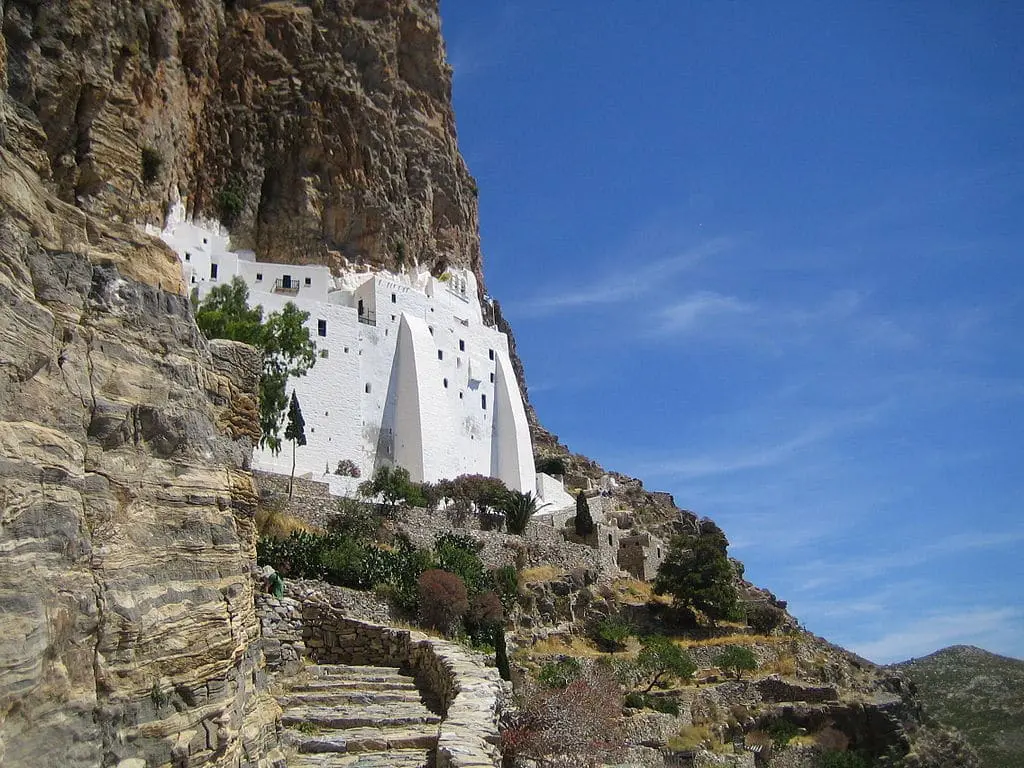
Amorgos, the Cyclades’ easternmost island, boasts marvelous beaches with azure waters, gorgeous caves, ideal spots for diving, scenic bays, and ancient footpaths leading through its steep rocky terrain.
It was there that the 1988 movie “Le Grand Bleu” ( The Big Blue) with Jean Reno was shot. The film became one of France’s most commercially successful films.
Built at the center of the island and surrounded by rocky hills, the maze-like Chora of Amorgos is considered to be one of the most picturesque in the Cyclades.
Here you can admire a breathtaking setting with beautiful squares, traditional Cycladic houses with bougainvillea trees in their courtyards and little whitewashed alleys.
In the morning you can wander around the narrow streets, visit the 13th century castle and the monasteries or relax at a local coffee shop; in the evening pick one of the cosy bars and tavernas scattered around Chora’s streets and squares and enjoy local specialties accompanied by a shot of raki.
Katapola is the main harbor of the island as well as a haven for boats and small cruise ships. Aigiali is the second harbor of Amorgos Island. It is very popular among young people as there is a camping site. Along its lively waterfront, you will find plenty of cafes and restaurants. Perched on the mountainside beyond Aigiali there are three picturesque villages: Tholaria, Lagkada and Potamos.
Beaches on Amorgos Island
On Agia Anna beach, where the film “Big Blue” was shot, you will find two amazing bays, one of which is home to the church of Agia Anna. The beach is pebbly, with rocks and caves, crystalline waters and is ideal for snorkeling.
Mouros Beach with its rocky landscape and secluded caves is superb. Take a moment to admire the breathtaking view from the top of the footpath that leads down to the beach.
Agios Pavlos is a small peninsula with pebbles. Take one of the boats departing from here to reach the small island of Nikouria, which boasts two amazing beaches.
Egiali Beach is a long sandy beach with many beach bars and tavernas. At one end of the beach, there is a path leading to the secluded beach of Levrossos.
Kalotaritissa Bay lies in the southernmost part of the island. It is a sandy, organized beach with beautiful blue water and a beach bar. Take a boat out to the stunning beach of Gramvoussa and bask on a white sandy beach with turquoise waters.
Maltezi is only accessible by boat departing from Katapola. It is an organized sandy beach with blue-green waters and a beach bar.
Mikri Vlyhada is a quiet secluded pebbly beach with crystal clear waters. In order to reach it you have to walk along a steep footpath (starting from Tholaria) but it is well worth the effort.
Panagia Hozoviotissa in Amorgos

You will find the Monastery of Panagia Hozoviotissa on Amorgos clinging to a steep rock above the endless blue of Agia Anna Beach.
The Monastery of Panagia Hozoviotissa has been standing there, a bright white sentinel against the grey rock surrounding it, since the year 1088.
The monastery has eight floors connected by narrow stone staircases carved into the rock. 350 steps lead you to the monastery, the interior of which is like a labyrinth. The cells of the monks are all carved into the rock to form a unique example of traditional architecture.
According to tradition, the miraculous icon of Panagia arrived by boat on the beach of Asia from Hozova in Palestine, sent by a pious woman who wanted to save the icon from the Iconoclasts.
The monastery is perched on steep cliffs 300 meters (984 feet) above sea level. Incredibly, it is only visible from the sea.
Olympia shipwreck
The famous Olympia shipwreck lies on the southwestern coast of the Greek island, near Kalotaritissa beach. The shipwreck has been featured in many documentaries and travel shows.
According to residents, a ship approached the island in February 1980. The captain was looking for a place near the coast where he would find shelter from the strong north winds. The ship anchored near the beach of Kalotaritissa but did not hold and the waves threw it on the rocks.
The ship’s original name, “Inland,” is still visible despite the rust. It was later renamed “Olympia.”
See all the latest news from Greece and the world at Greekreporter.com. Contact our newsroom to report an update or send your story, photos and videos. Follow GR on Google News and subscribe here to our daily email!



